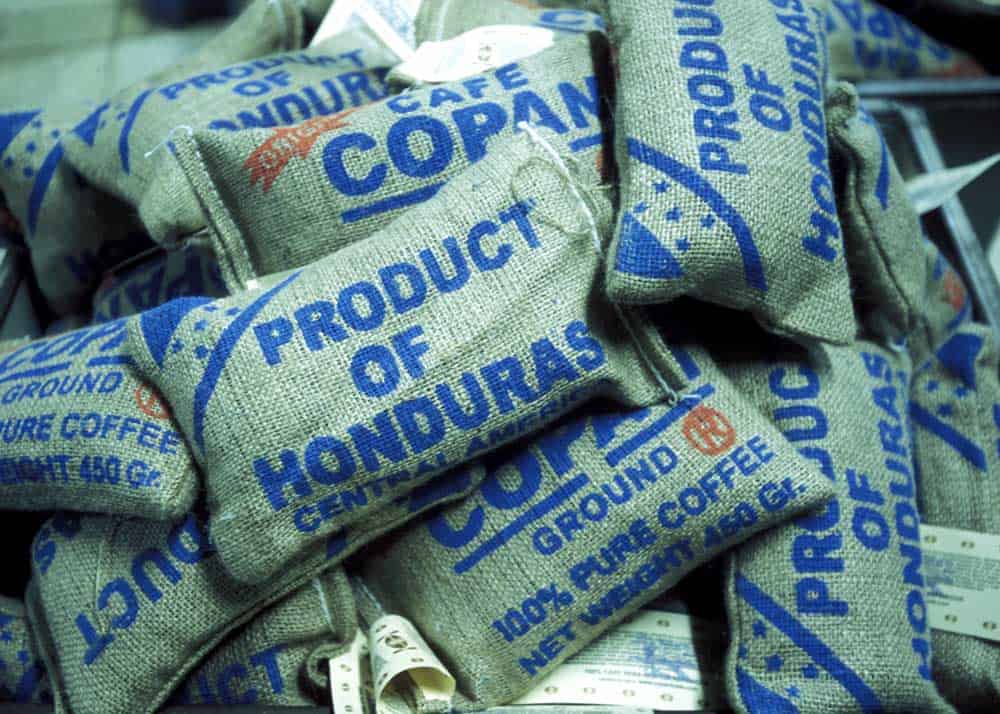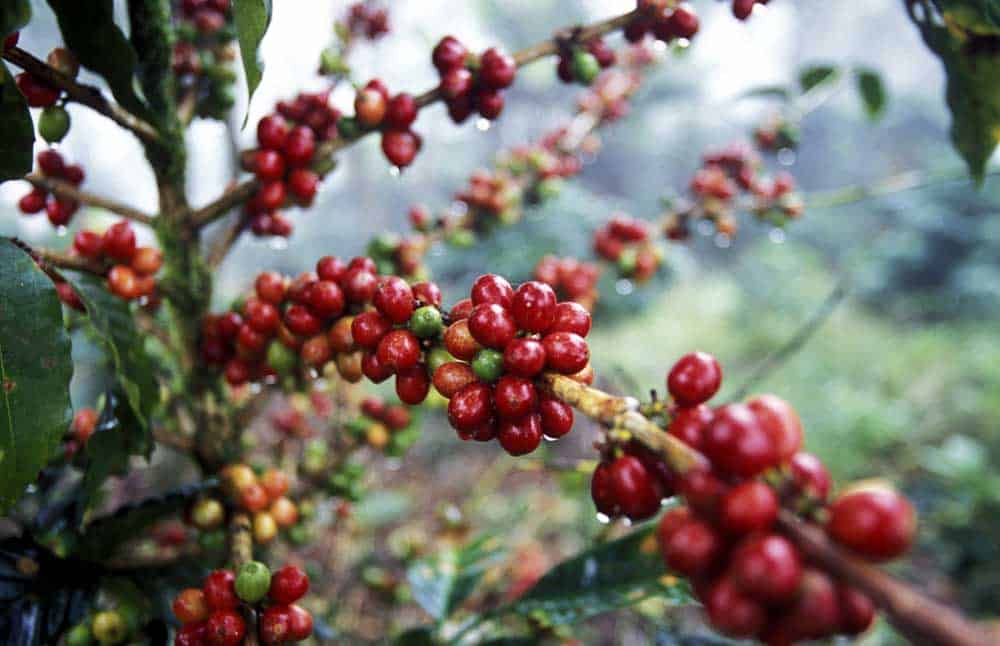While you have probably heard of Colombian coffee, there are many other coffee-producing countries like Honduras that are worth trying. In fact, Starbucks regularly features Honduran coffee and has helped it reach new heights in recent years.

Honduran coffee is from Honduras, which is a country in Central America with a warm climate and a variety of landscapes. The coffee produced here possesses a variety of tasting notes, ranging from fruity to chocolate and more.
In the past few years, Honduran coffee has grown more of a following and is becoming more widely available. You can find a variety of Honduran brands in most grocery stores and a wider array of choices in specialty stores.
If you are a coffee lover, you will fall in love with this unique bean from Honduras.
But don’t worry: if you have never heard of Honduran coffee, we will discuss the ins and outs of this fantastic brew and how you can incorporate it into your morning routine.
Table of Contents
The History of Honduran Coffee
Before we jump into Honduran coffee today, we are going to discuss how it came to be. Coffee cultivation has made a substantial impact on the country and has actually helped increase its income; in the past, Honduras has had some hard times.
Starting in 2009, during a political coup, the country faced bankruptcy and was very financially unstable. However, their fantastic coffee crops were a significant part of recovering from this issue. Cultivating coffee allowed them to generate employment and make the money they were so desperately needing.
The beginning of coffee trading in Honduras started back in the 18th century when traders brought coffee into the area. By the 19th century, some farmers around the country began to grow crops, but it was not abundant yet. However, during the late 20th century, the crop really began to take off.
A massive hit to the blooming coffee industry came in 1998 when Hurricane Mitch devastated the country and caused immense damage. At this time, much of the agriculture in the country was destroyed, including the newly beloved coffee crops.
However, after some farmers began taking their products to Guatemala to sell for higher pricing, the Honduran coffee industry has since been back on the rise and growing quickly.
Honduran Geography & Coffee Growth
A major reason why Honduran coffee is so attractive in taste is because of the geography of the country itself. The country is bordered by the Caribbean Sea on its northern coast and the Pacific Ocean in the South. It makes up a total area of around 43,000 square miles, but this land area is made of mountains, plains, jungles, and a densely populated Sula Valley.
The climate here is mostly temperate in the mountainous areas and a little more tropical in the lowlands. This unique variance of temperatures and altitudes dramatically affects the way coffee is grown in the country.
3 Honduran Coffee Grading Categories
Hondurans have divided the coffee into three grading categories:
- Strictly High Grown: Coffee is grown 1,350 meters or more above sea level.
- High Grown: Coffee is grown 1,200 to 1,350 meters above sea level.
- Central Standard: Coffee is grown from sea level to 1,200 meters.

6 Honduran Coffee Regions
The different ranges in climate and soil can affect the tastes and coffee production. Honduras is actually known for having six coffee regions that produce delicious coffee.
It can be challenging to know what to expect from your Honduran coffee because of these variations, but we will break down what to expect from each location:
- Copan: This is a region located near the Guatemalan border that has altitudes over 1,000 meters. The coffee grown here is full of robust flavor, featuring hints of chocolate flavors. The area is known for the amazing Ruta del Café, which offers several coffees from around the country.
- Montecillo: This is a southern region that is near the border of Salvador. The coffee here is much sweeter in flavor, featuring tastes like orange and peach with levels of acidity. This area is a high altitude of up to 1,600 meters and is known for producing the most coffee each year.
- Opalaca: This area has a slightly higher altitude, and the coffee here tends to have a strong aroma, tropical berry flavors, and a slight acidity. This area features farmers who have been awarded for their fantastic coffee crops. The flavor-to-price ratios in the area are some of the best.
- Agalta: This is a more inland area that features slightly lower altitudes and a tropical climate. The coffee here has tropical fruity flavors, with caramel and chocolate undertones. The coffee here is only harvested from December until March for the best flavors.
- Comayagua: This is a remote region near the center of the country where the coffee is also harvested in the same months as Agalta. This coffee has a citrusy flavor with acidity levels that give it a creamy body. The climate here gives the coffee a unique and delicious taste.
- El Paraiso: Found on the Nicaraguan border with 1,100 to 1,400-meter altitudes, this area does not produce as much coffee as some of its counterparts. This area also features a citric flavor that has a soft body and a higher level of acidity.

Honduran Coffee Beans
The six coffee regions in Honduras are known to produce a few popular arabica bean varieties.
These arabica varieties include:
- Bourbon
- Catuai
- Caturra
- Pacas
- Typica
How Honduran Coffee Beans Are Processed
Uniquely, Honduran coffee is wet-processed, which makes the coffee delicious. These methods require the farmers to have specific equipment and use large amounts of water to process the beans. This starts with the coffee cherries being picked and then sorted by immersing them in water.
This immersion technique makes sorting the coffee cherries simple, as the good ones will sink to the bottom, and any unripe ones will rise. Once they are sorted, the skin of the cherry will be removed. Those processing the cherries will do this by pressing the fruit against the screen with a machine.
Immersion is one of the most common sorting methods used in Honduras and is very useful. These techniques allow farmers to sort large batches of coffee cherries quickly. However, though it is effective, this method does have some downsides.
In recent years, the country has begun working to make this processing technique greener. Today, many farmers have implemented plans to reuse wastewater so that it is not releasing acid into the waterways. They are also using scrap coffee cherries instead of letting them go to waste.
What Does Honduran Coffee Taste Like?
The region and climate that the coffee is grown can significantly affect the taste of the coffee itself, rather than the processing method. In fact, you may be able to notice slight changes in flavor when trying various Honduran brands.
However, the coffee from Honduras is known as:
- An intense, powerful scent
- Notes of chocolatey flavor
- Nut and fruit tastes
- Sugary or honey-flavored sweetness
- A good balance of sweetness and coffee flavor
- Some feature a bright, zesty acidity
Curious how these flavor notes compare to other coffees? Check out our guide to 241 Flavorful Words to Describe Coffee Flavor
Best Honduran Coffees Available Today
You should be able to find some Honduran coffee in your local grocery store or supermarket. However, if you cannot find these coffees easily, you can almost always find them in specialty stores or online for purchase. Also, there are coffees from Honduras often featured at major coffee shop chains.
Some of the best coffee brands from Honduras that are available today are:
- Macala Coffee
- Copan Coffee
- El Cedral Coffee
- Organic Marcala
- Santa Barbara Coffee

Want to order a coffee on your visit to Honduras? Here’s how to order coffee in Spanish.
Which Honduran Coffee Will You Try?
Honduran coffee is delicious and becoming more widely known worldwide. The coffee features several distinct flavors that are greatly influenced by the unique region in which they are grown, the altitudes found there, and the overall climate.
If you have never tasted Honduran coffee, picking up some on your next grocery trip is bound to give you a favorite new brand.
- About the Author
- Latest Posts
Bryan Haines is a co-founder and writer on EnjoyJava – and is working to make it the best coffee blog in the world.
He is a travel blogger at Storyteller Travel and blogs about photography at Storyteller Tech. He is also co-founder of Storyteller Media, a company he started with his wife, Dena.
